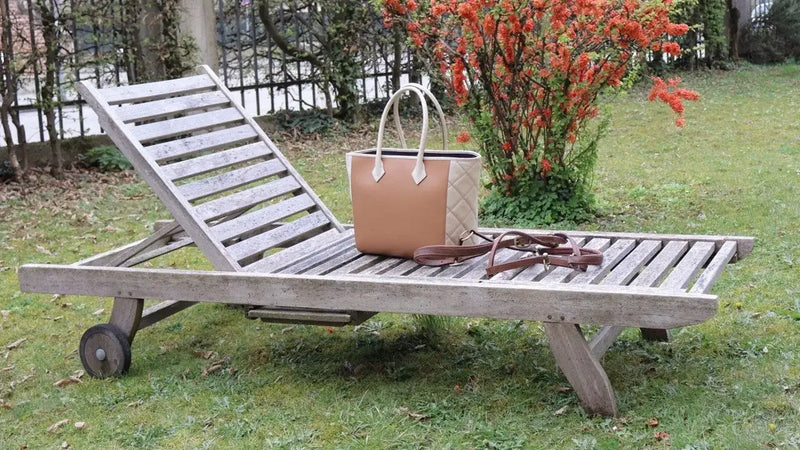
Leather handbags are timeless fashion pieces, but improper storage can lead to deformation, mold growth, and premature wear. Therefore, it is important to know how to correctly store leather handbags. By following the right techniques, the beauty and durability of the leather accessories can be preeserved for years to come.
Why Knowing How to Store Leather Handbags Matters
Leather is a natural material that requires careful handling. Storing your handbag incorrectly can lead to issues like misshapen structures, cracked surfaces, or trapped moisture. A well-maintained leather handbag retains its luxurious appearance and functionality, making it a valuable long-term investment.
Essential Maintenance Tools for Leather Handbag Storage
To ensure proper care, having the right maintenance tools is crucial. A special leather brush helps remove dust and debris, while a clean cotton cloth allows for gentle dry wiping. Towels and crumpled newspaper assist in absorbing excess moisture and maintaining the handbag’s shape. Storing your leather handbag in a non-woven fabric bag prevents dust accumulation while allowing the airflow to keep the material fresh.
Storage Techniques Based on Usage Frequency
Leather handbags that are used frequently require different storage methods compared to those used occasionally. For daily-use handbags, emptying the contents and stuffing them with dry towels or crumpled newspaper helps them retain their form. If a leather handbag is stored for extended periods, it should be placed in a dust bag, kept away from plastic, and periodically aired out to prevent mold formation.
Cleaning the Leather Handbag Before Storage
Before placing a leather handbag into storage, it should be cleaned thoroughly. A special leather brush or a soft cloth is ideal for removing dust. To preserve the shape, stuffing the handbag with a clean, soft cloth or wrapped newspaper is recommended. Using a breathable storage bag rather than plastic ensures proper ventilation, reducing the risk of trapped moisture that may lead to damage.
Choosing the Best Storage Location for Leather Handbags
Leather handbags should always be kept in a cool, dry place, away from direct sunlight to prevent fading. Storing them in breathable fabric bags or ventilated boxes prevents dust accumulation while maintaining airflow. For premium leather handbags, a climate-controlled safe provides optimal conditions. When storing leather jackets or coats alongside handbags, padded hangers prevent unwanted creases and maintain the structure.
Step-by-Step Guide on How to Store Leather Handbags
Step 1: Clean the Handbag
Before storing your handbag, wipe off dust and dirt using a leather brush or a soft, dry cloth.
Step 2: Maintain the Shape
Stuff the handbag with a clean, soft cloth or wrapped newspaper to preserve its structure.
Step 3: Choose the Right Storage Bag
Use a breathable fabric bag rather than plastic to allow proper ventilation and prevent moisture buildup.
Step 4: Select the Best Storage Location
Place your handbag in a cool, dry area away from direct sunlight, as excessive heat can fade and dry out the leather.
Step 5: Check the Handbag Periodically
Even when stored, it is important to inspect your handbag every few months to ensure it remains in top condition.
Additional Maintenance Tips for Long-Term Leather Handbag Care
Regular cleaning is key to preserving leather quality. Depending on the exposure to dirt, a handbag should be cleaned at least once a year using mild soap and water. Proper conditioning is also essential, as different types of leather require specific treatments. While full-grain leather should not be conditioned, top-grain and genuine leather benefit from occasional application of high-quality conditioners to prevent drying and cracking.
When it comes to the question of how to store leather handbags, temperature and humidity levels play a major role. Ideally, handbags should be stored at temperatures between 15–21°C (60–70°F) with humidity levels ranging from 40–50%. In particularly humid environments, using a dehumidifier helps control moisture levels. Keeping the storage area well-ventilated prevents musty odors and mold growth, ensuring that the leather remains fresh and supple.
Handling and Long-Term Storage Strategies
Leather handbags should always be handled with clean hands to avoid transferring oils and dirt. If a leather handbag becomes wet, patting it dry and allowing it to air dry naturally helps prevent water damage. Metal hardware, such as zippers and buckles, should be gently wiped to maintain their shine. For long-term storage, silica gel packs can be placed nearby to absorb excess moisture, but they should never come into direct contact with the leather to prevent deterioration.
Repairing Scratches and Scuffs on Leather Handbags
Even with careful handling, minor scratches may appear on leather surfaces over time. A small amount of leather conditioner can help buff out light scratches, while deeper marks may require a specialized leather repair kit with a color-matching compound. After any repair work, polishing the leather restores its shine and smooth finish.
Final Thoughts on How to Store Leather Handbags
Leather handbags are an investment that deserves proper care. By following these storage and maintenance techniques, you can ensure that your handbag retains its quality, elegance, and durability. A well-stored leather handbag not only looks pristine but also stands the test of time, making it a treasured piece for years to come.

